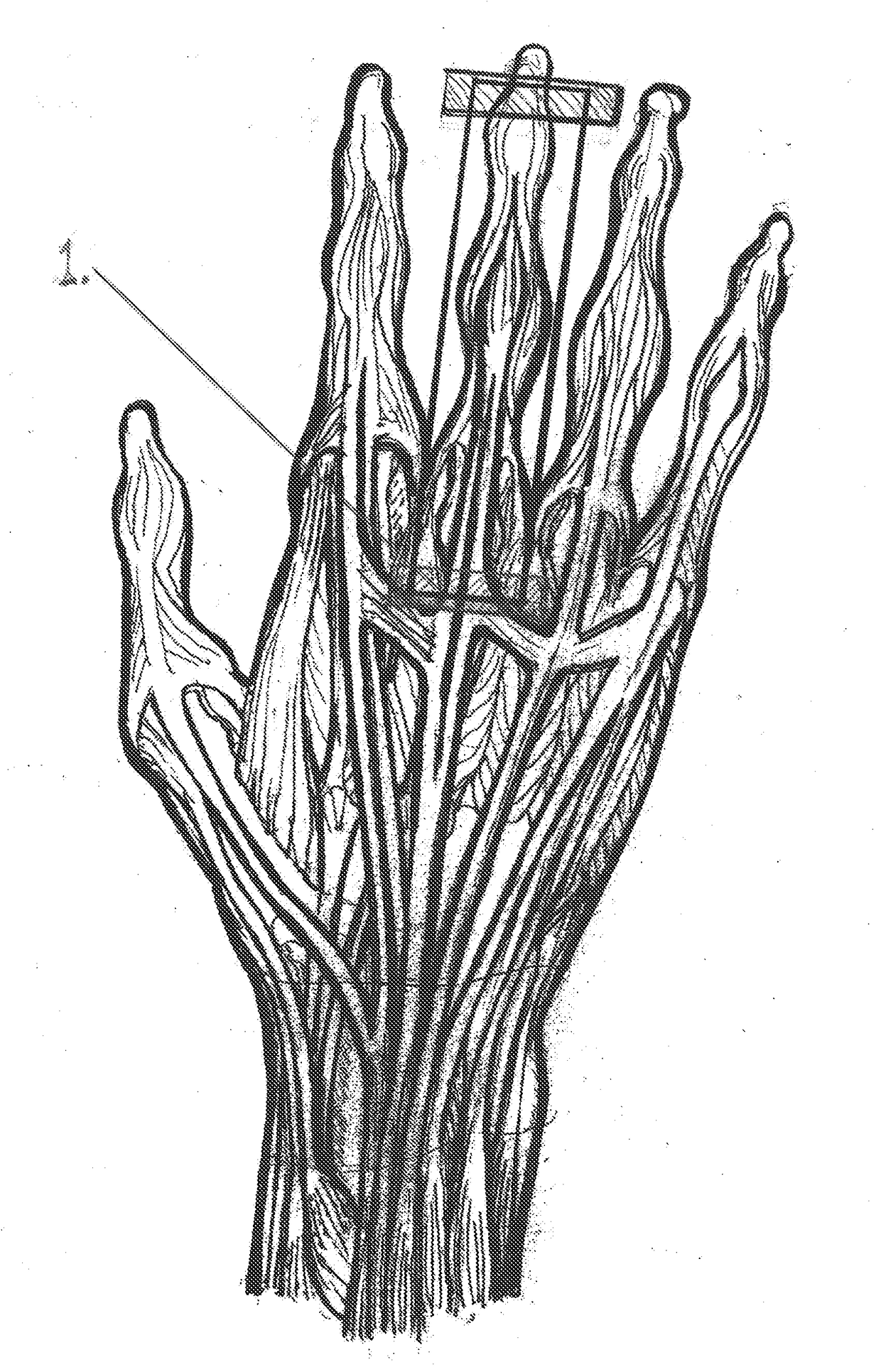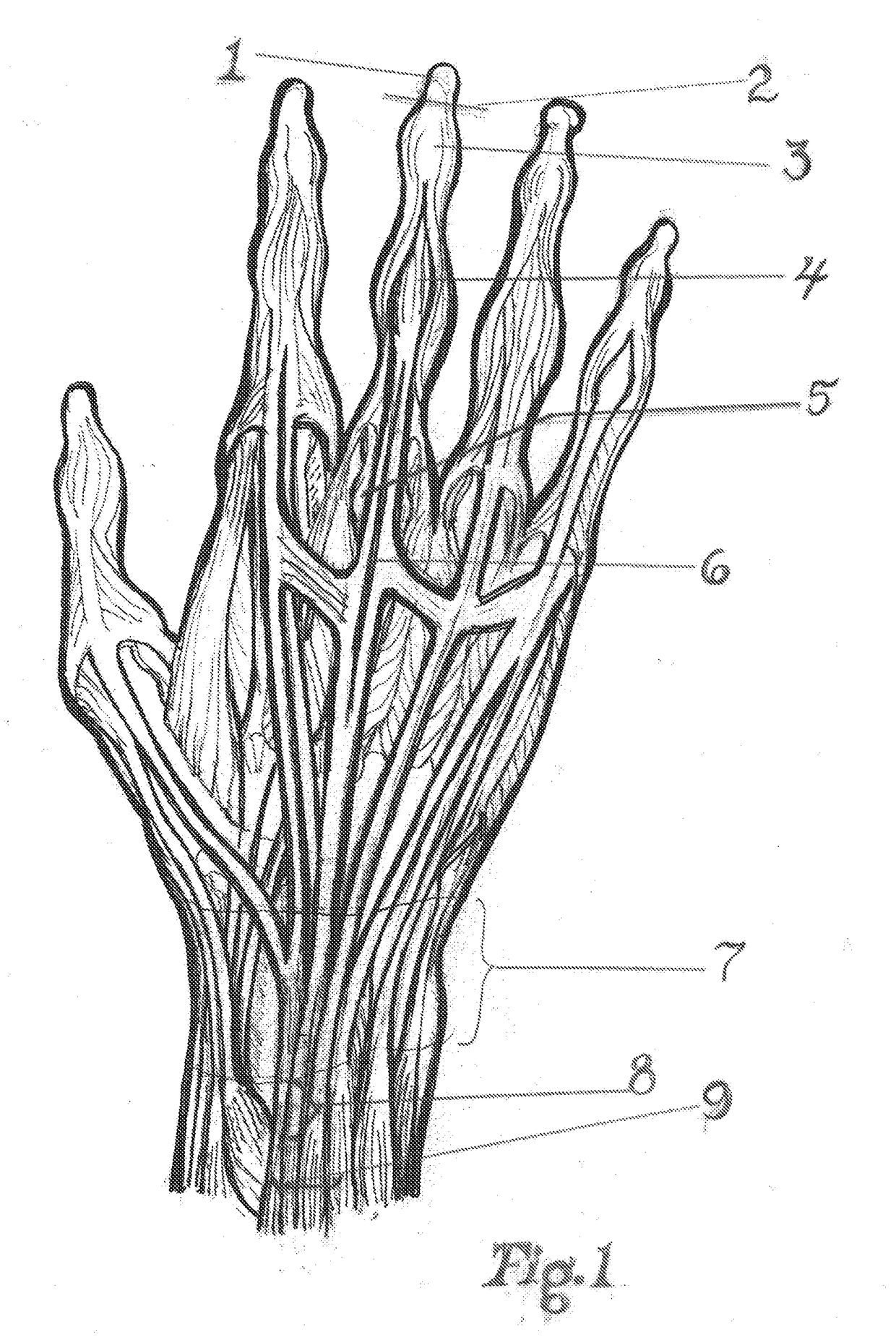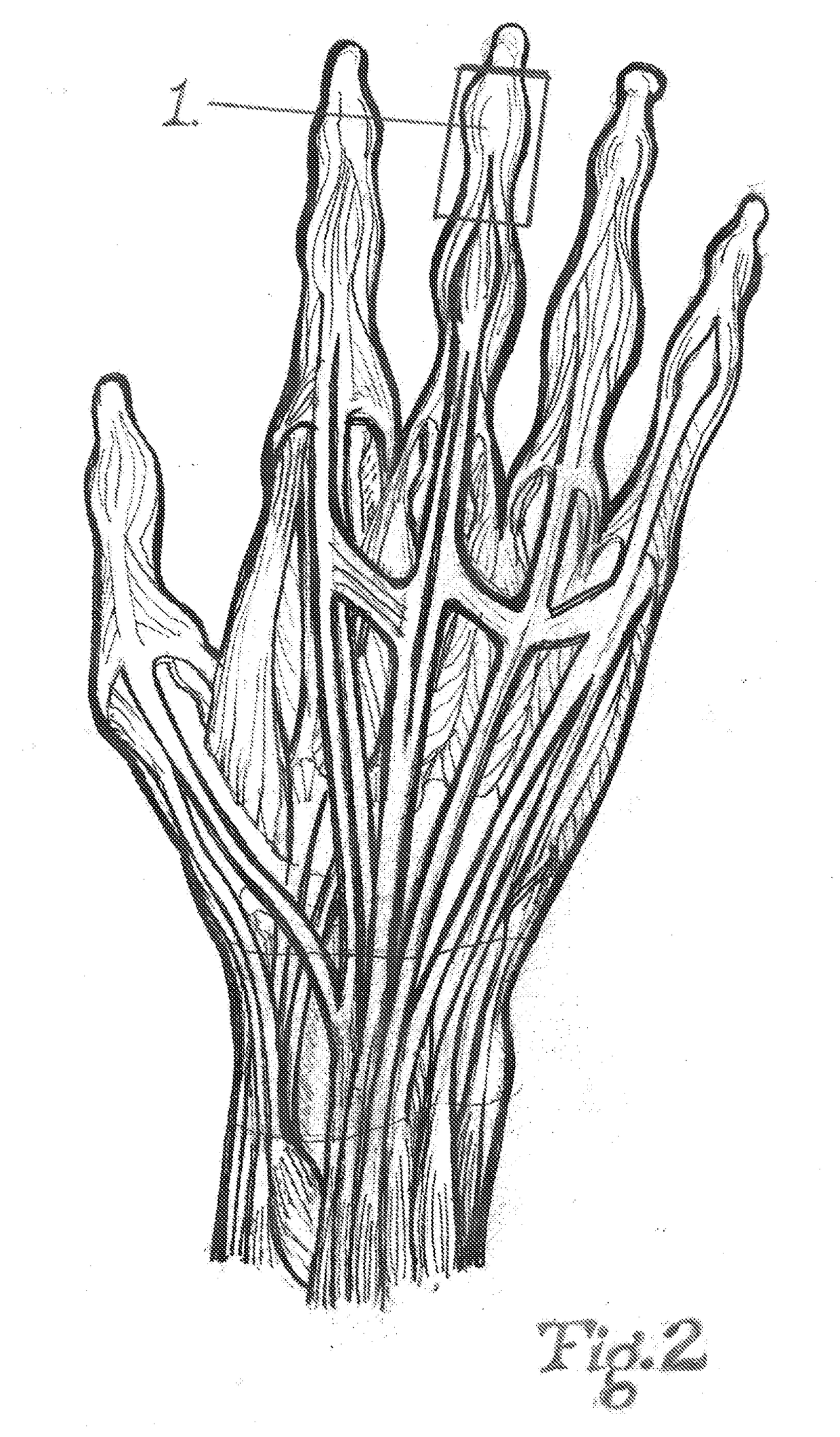Dynamic Taping Method for Inhibition and Elicitation of Skeletal Muscle Tone
a skeletal muscle tone and dynamic taping technology, applied in the field of neurology and orthopedic medicine, can solve the problems of large muscles taking longer to correct, and achieve the effects of reducing the risk of injury
- Summary
- Abstract
- Description
- Claims
- Application Information
AI Technical Summary
Benefits of technology
Problems solved by technology
Method used
Image
Examples
Embodiment Construction
[0020]The novelty in this invention is specifically the pattern of the taping method. The pattern is designed to target specific physiological structures and or processes. These structures in turn cause the resulting muscle tone changes. This taping method elicits simultaneously inhibition of muscle tone of the antagonist and elicitation of the targeted agonist via the tendons and other structures that are taped.
[0021]During the inhibition process, the antagonist to the targeted muscle the practitioner wants to contract are inhibited by the lengthening of the belly of the muscle. This occurs in response to the contraction of the targeted muscles by the tape that is applied to the tendons over the specific joints. This causes deactivation of the muscle spindles fibers. It will cause a reverse of the stretch reflex. This is not just a simple phasic reflex and will be discussed in greater detail later in this patent.
[0022]During the elicitation process, the targeted muscle that the pra...
PUM
 Login to View More
Login to View More Abstract
Description
Claims
Application Information
 Login to View More
Login to View More - R&D
- Intellectual Property
- Life Sciences
- Materials
- Tech Scout
- Unparalleled Data Quality
- Higher Quality Content
- 60% Fewer Hallucinations
Browse by: Latest US Patents, China's latest patents, Technical Efficacy Thesaurus, Application Domain, Technology Topic, Popular Technical Reports.
© 2025 PatSnap. All rights reserved.Legal|Privacy policy|Modern Slavery Act Transparency Statement|Sitemap|About US| Contact US: help@patsnap.com



